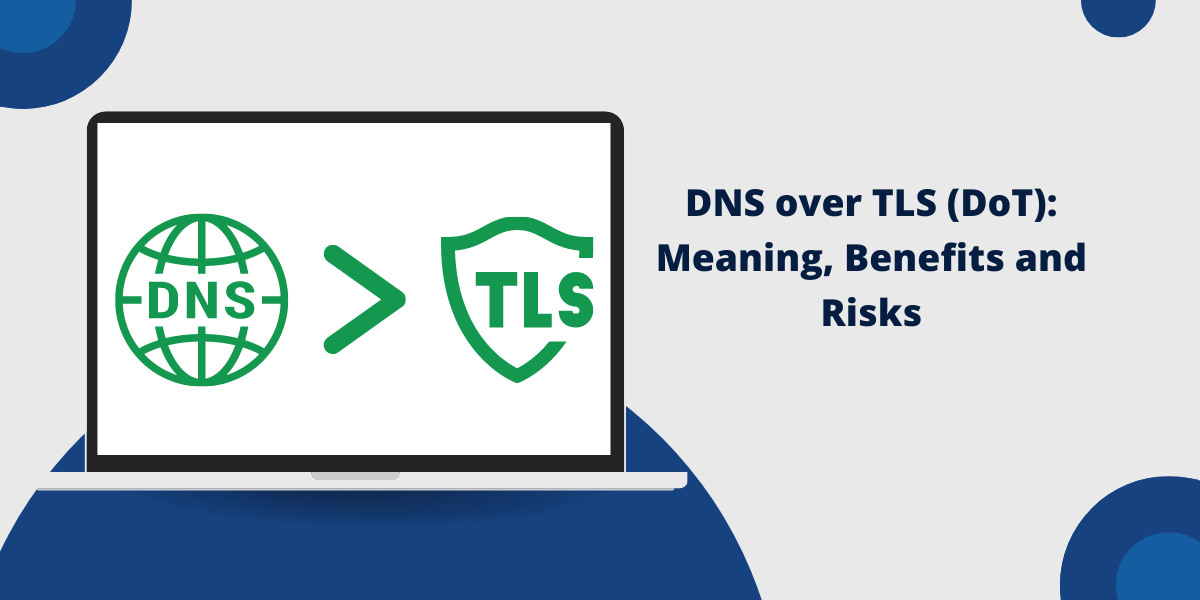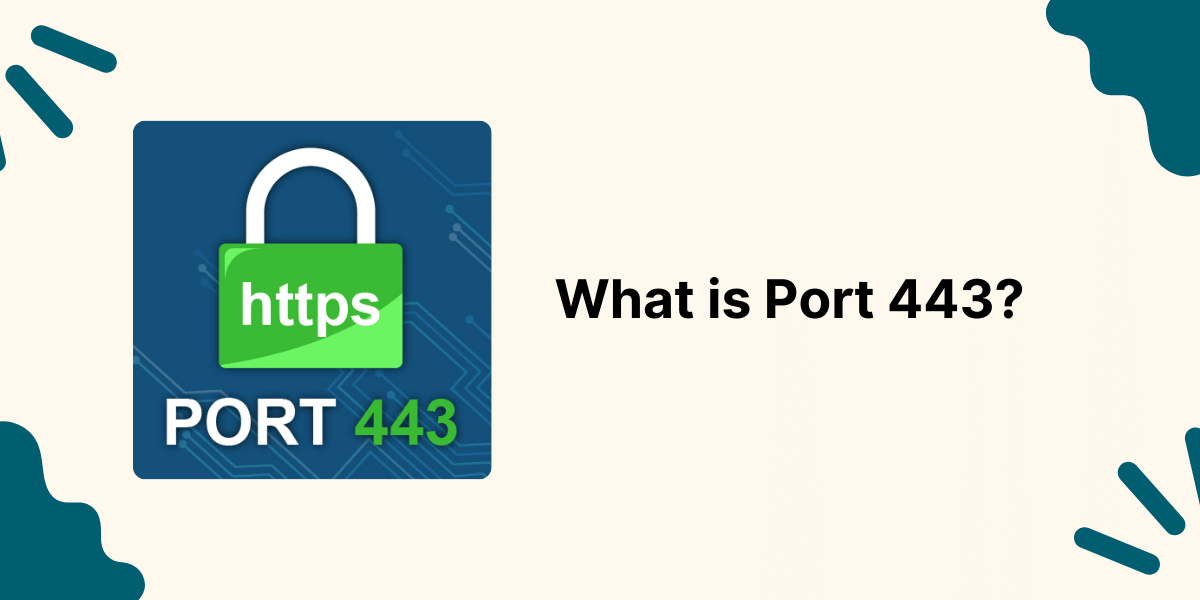What is DNS over TLS (DoT)
DNS over TLS (DoT) is a protocol that encrypts DNS queries and responses using the Transport Layer Security (TLS) protocol. It helps prevent eavesdropping and manipulation of DNS data by encrypting the traffic between a DNS client and a server. DoT uses TCP port 853 instead of the traditional port 53 to submit DNS queries over a TLS-encrypted channel. It can prevent DNS spoofing attacks by providing integrity protection and authentication of the DNS responses.
DoT also provides privacy benefits by encrypting the DNS queries and hiding them from network surveillance. Operating systems and apps are increasingly adopting DoT to secure DNS traffic. However, it requires support from both the DNS client and server side to work effectively.
Key Takeaways
- DNS over TLS (DoT) encrypts DNS queries and responses between the DNS resolver and authoritative DNS servers to prevent eavesdropping and manipulation of DNS data.
- DoT helps protect the privacy and integrity of DNS data by encrypting it in transit. This prevents DNS spoofing, surveillance, and manipulation.
- DoT implementation requires support from both the DNS resolver and authoritative DNS servers. Web browsers and operating systems are increasingly supporting DoT.
- The benefits of DoT include better privacy and security for DNS queries, prevention of DNS spoofing/manipulation, and an encrypted connection between the DNS resolver and servers.
- Potential risks include increased latency, complexity, lack of ubiquity, centralized trust model, and issues with blocking/filtering systems.
- Overall, DoT improves DNS security and should be implemented with proper precautions. Widespread adoption still faces challenges, but major browsers and OS are adding support.
How Does DNS over TLS Work?
DNS over TLS works by encrypting DNS queries and responses between a DNS resolver (client) and an authoritative DNS server. This creates an encrypted tunnel protecting the data in transit.
Here are the key steps in a DoT setup:
- The DoT-enabled DNS resolver initiates a TLS handshake with the DoT-enabled authoritative nameserver. This establishes an encrypted session.
- DNS queries are sent from the resolver to the authoritative nameserver through the encrypted TLS tunnel.
- The authoritative nameserver responds with the DNS response back through the encrypted channel.
- The TLS encryption is terminated at either end point. Only the resolver and nameserver can interpret the plaintext DNS data.
- TLS provides confidentiality and integrity for the DNS data in motion between the two endpoints. The specific TLS version and cipher suites used also impact security levels.
DoT can be implemented using TCP port 853 or UDP port 853 for resolution. TCP is more common for DoT since it enables the TLS handshake and persistent connections.
Both the DNS resolver and authoritative nameserver must support DoT for it to work. This requires upgrading the operating system, browser, router, and DNS server. Cloudflare and Google Public DNS are examples of public DoT-enabled recursive resolvers.
What are the Key Benefits of Using DNS over TLS
There are several important benefits DNS over TLS provides compared to traditional unencrypted DNS:
Improved Privacy
- Encrypts all DNS queries so they can’t be easily intercepted and logged by third parties. This prevents surveillance of your browsing activity.
Prevents DNS Spoofing/Manipulation
- Encrypted queries and DNSSEC prevent on-path devices from manipulating or forging DNS responses to redirect traffic.
- Thwarts DNS Cache Poisoning attacks that try to inject false DNS records.
Data Integrity Protection
- TLS encryption ensures the DNS responses match the intended authoritative source and have not been altered.
Enhanced Security for Public WiFi
- Encrypts DNS queries over public/open WiFi where standard DNS is especially at risk of spoofing attacks.
Compliance with Privacy Regulations
- DoT helps meet privacy-focused regulations like GDPR by encrypting identifying DNS queries.
Performance Gains
- DNS over TCP is faster than legacy DNS over UDP. TCP improves transfer reliability.
Centralized Recursive Resolution
- Can configure devices to use a DoT-enabled public DNS resolver like Cloudflare for consistent recursive resolution.
Potential Downsides and Risks of DNS over TLS
While DNS over TLS represents an important security advancement, it also introduces potential downsides:
Increased Latency
- TLS handshake adds extra round trip time (RTT) vs. standard DNS lookups. This increases latency, which can impact real-time applications.
Lack of Ubiquitous Support
- DoT support is needed for both clients and authoritative nameservers. Partial deployment can break resolution. Upgrade challenges remain.
Complexity Introduced
- Additional software and certificates are required for TLS. Can introduce implementation and troubleshooting issues.
Centralized Trust Model
- The use of public DoT resolvers shifts trust. Man-in-the-middle attacks are still possible if the resolver is hacked.
Filtering and Blocking Issues
- Encrypted DoT queries may be blocked by enterprise firewalls or ISP-level filtering systems. Breaks visibility and policy control.
Potential Censorship Circumvention
- Authoritarian regimes may try to block DoT to prevent access to banned content. But this hurts overall DNS security.
These risks need to be weighed, given the significant security and privacy benefits of DNS over TLS in most use cases. Careful implementation and continued adoption can help overcome these challenges.
How to Implement DNS over TLS
To implement DNS over TLS, support is required on both the client-side DNS resolver and the authoritative nameservers:
Client-side
- Operating Systems: Windows, MacOS, Linux, and mobile OS are adding native DoT support.
- Web Browsers: Firefox, Chrome, and Safari support DoT configurations. Browsers redirect DNS queries to DoT recursive resolvers.
- Network Devices: Routers, firewalls, and load balancers are gaining DoT capabilities.
Authoritative Nameservers
- DNS software like Bind and PowerDNS have added TLS transports.
- Managed DNS providers enable DoT configuration, including AWS Route 53, GoDaddy, and Rackspace.
- Cloudflare operates a large public DoT resolver (1.1.1.1).
DNS over TLS Adoption Challenges
Despite the benefits, DNS over TLS faces adoption challenges:
- Requires broad software/firmware upgrades: All endpoints need DoT support, including client devices, networks, apps, and DNS servers. Partial deployment can cause problems.
- Latency impacts: Extra round trips from TLS handshakes and TCP connections can degrade the performance of real-time applications. This needs optimization.
- Backward compatibility: DoT needs to co-exist with legacy DNS over UDP in the foreseeable future during partial migration.
- Firewall and filtering system issues: DoT encrypted queries may break enterprise security controls. Solutions like DNS proxy servers can mitigate this.
- Caching and prefetch optimizations: Existing DNS optimizations rely on unencrypted queries. Workarounds need development.
- Potential censorship concerns: Authoritarian regimes may attempt DoT blocking, which generally hampers security.
The Future of DNS over TLS
DNS over TLS is still in the early adoption phase, but momentum is growing, driven by privacy and security awareness. Based on current trends, we can expect:
- Continued support in major operating systems, browsers, apps, and networks. TLS will eventually become the default for DNS.
- Growth of public DoT resolvers as the easiest path to benefits for home users and small businesses.
- Enterprise rollout combining on-premise Authoritative DoT servers and centralized recursive resolvers. Hybrid models are expected.
- Upgrades to firewalls and security controls to support encrypted DNS through rules, inspection, proxy servers, etc.
- Optimization efforts around DNS caching, prefetching, and minimizing latency impacts from TLS handshakes.
- Blocking attempts by totalitarian states countered by circumvention. Overall, it is a gain for DNS security but with censorship struggles.
- Eventual full migration will take 5+ years. UDP is likely to persist alongside DoT indefinitely for legacy support.
Expanding the use of technologies like DNS over HTTPS (DoH), which further anonymizes DNS queries, will also gain traction. DoT represents a foundational layer of encrypted DNS that improves integrity, resilience, and privacy.
Final Thoughts
DNS over TLS brings important privacy and security protections to the aging DNS protocol. Encrypting DNS queries protects against surveillance, spoofing, and manipulation. Despite adoption challenges, support is increasing for DoT across major browsers, operating systems, and infrastructure.
With proper planning and preparation, organizations should begin implementing DNS over TLS wherever possible to take advantage of its security benefits. Over time it will become the standardized secure DNS transport method as its usage continues growing.
Frequently Asked Questions (FAQs) About DNS over TLS
Here are some common questions about this important encrypted DNS protocol:
Does DNS over TLS provide full end-to-end encryption for DNS?
No, DoT encrypts the connection between the DNS resolver and the authoritative nameserver. The clients and servers can still see the plaintext requests and responses. It does not provide true end-to-end encryption like DNS over HTTPS (DoH).
Does my ISP see and block DNS over TLS queries?
If using a public DoT resolver, the ISP can only see encrypted DNS traffic on port 853, not the content. With an ISP-controlled resolver, they can still inspect plaintext queries.
Can DNS over TLS use TCP or UDP?
DoT generally uses TCP for the handshake and persistent connections. However, it is also possible to encrypt UDP DNS traffic using Datagram TLS (DTLS). This is less common.
What are the performance impacts of TLS on DNS speed?
The extra round trips for TCP and TLS handshakes introduce some additional latency. There are also packet size considerations with the added encryption overhead. These usually amount to dozens of milliseconds – optimized implementations continue to improve this.
Will DoT prevent censorship by authoritarian regimes?
Potentially, though censoring bodies can still block the DoT ports. This cat-and-mouse game can harm overall DNS functionality and security.
Is DNS over TLS the same as DNS over HTTPS?
No, DoT and DoH both add encryption but work differently. DoT encrypts DNS transport between resolvers and nameservers. DoH tunnels DNS over HTTPS connections further anonymizing the client.
What is the difference between a DNS forwarder and a DNS resolver?
A DNS forwarder passes queries to an upstream resolver to handle recursive lookup. A resolver directly queries authoritative nameservers to resolve queries using cached records.
Does DNS over TLS require DNSSEC?
DNSSEC provides additional protection by validating responses for authenticity. But it is not strictly required for DoT encryption to work. DNSSEC is recommended when using DoT.

Priya Mervana
 Verified Web Security Experts
Verified Web Security Experts
Priya Mervana is working at SSLInsights.com as a web security expert with over 10 years of experience writing about encryption, SSL certificates, and online privacy. She aims to make complex security topics easily understandable for everyday internet users.



